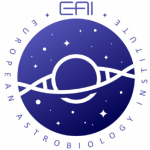Tracing Life and Identifying Habitable Environments
“Tracing Life and Identifying Habitable Environments” is an EAI Project Team.
Project Team Coordinators

Dr. Inge Loes ten Kate
Utrecht University, Netherlands

Prof. Lena Noack
Freie Universität Berlin, Germany
- Tracing life and its boundaries on Earth through space and time
- Spatial and temporal preservation and evolution of tracers of life
- Methods to investigate the co-evolution of life and inhabited planets and moons
- How to distinguish between merely habitable worlds and inhabited or seemingly uninhabited ones
- Mission strategies for remote and in-situ tracer detection
To pave the way for optimal interpretation of (near)-future findings, the team will aim to identify a common nomenclature by establishing a classification of tracers related to habitability and life. It will do this by comparing the usage of different tracer definitions for both life and habitable environments in the multidisciplinary context, while aiming at an overarching unambiguous interpretation accepted by all scientific disciplines. With this new nomenclature the team will then establish the first European multidisciplinary, standardized, systematic, open access and searchable tracer repository containing scientific data, locations of accessible infrastructure, and descriptions and locations of physical samples, based on the (existing) scientific literature. Here, the community can collect and compare definitions and interpretations of tracers from different research fields, including their preservation and their susceptibility to environmental factors. This repository will be instrumental in identifying technology developments that are needed as input for future space missions, instrument concepts, and laboratories both on Earth and in space.


